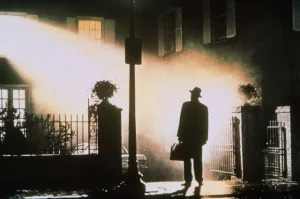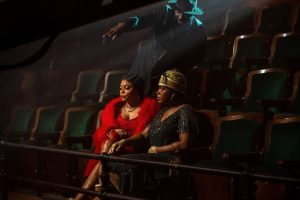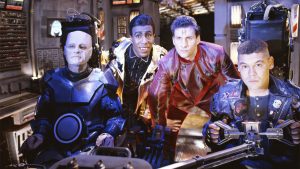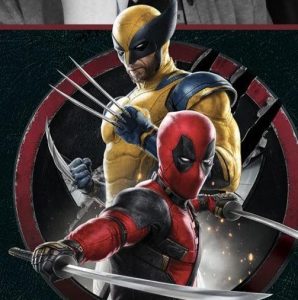
The post Home Video Hovel: Dogfight, by Scott Nye appeared first on Battleship Pretension.
“I’ll sing you the gentlest protest song I know,” Joan Baez says in her introduction to “What Have They Done to the Rain” on her 1962 album Joan Baez in Concert. “It doesn’t protest gently, but it sounds gentle.” A little more than halfway through Nancy Savoca’s remarkable, quietly moving 1991 film Dogfight, Rose (Lili Taylor) performs the song for Eddie (River Phoenix) in a San Francisco music club. She is a meek waitress devoted to folk music. He is a Marine on twenty-four hour leave. It is 1963. We know what lies ahead for each in the coming years. He began the night after booze and rowdy, cruel fun at her expense – he found her at the end of her shift at her mother’s restaurant and figured she was plain enough to take to a competition among the troops for who can bring the ugliest date. When he begs her for another chance, to spend a little time with him, she agrees, but swears she’ll kill him if he does anything like it again. She does not protest gently, but she sounds gentle.
Bob Comfort wrote the script – which was gradually revised by Savoca, Taylor, and Phoenix – based on his own experiences as a Marine coming to terms with the depravity in which he routinely engaged. The film operates in a productive push-pull between a sense of nostalgia that’s endemic to 60s-set films made in the 90s, and an active examination of the misogyny and cruelty that gradually ramped up in the seemingly-idyllic culture during the 1950s. The film’s soundtrack is a pure pleasure cannon for those who love this period of music, everything from the pop hits of Ricky Nelson and Claudine Clark to the burgeoning folk scene of Baez and Bob Dylan. As far removed as the San Francisco of 1963 was to 1991, we’re now more than twice that distance, and today the city is only on the edges the walk-all-night hub of oddball characters that the film depicts. Whatever uncertainty a contemporary audience has about why a nice girl like Rose would give a jughead like Eddie a second chance can, perhaps, to a degree, be made more palatable by the world she gets to walk around in.
Yet it is a lonely world for women. Rose’s mother (Holly Near) is raising her alone, and falls asleep each night in front of the television. Rose herself only has the vestiges of a social life. She’s familiar to the owner of the club, though she does not perform there, and doesn’t give any indication she has the fulfilling friendships that Eddie enjoys with his fellow soldiers. Those boys only bonded because they were lined up alphabetically and their last names all start with B, but that was enough to forge a vital bond. On the other hand, what do they do with that bond? Torment perfectly nice girls, get drunk, and hang out in porno theaters. Without showing much combat, the film is acutely aware of the psychological damage army life does to young men even before they go to war. It has unexpected sympathy for Eddie and his friends, despite all they do, curious about their own victimhood, their actions an extension of unconscious impulses the war machine has instilled in them.
Watching Eddie emerge from them is akin to watching someone come out of a mind-control trance in a supernatural thriller. Phoenix took on the role for the challenge it presented of playing someone far away from himself and the roles he’d become known for (and continued on with in My Own Private Idaho, which premiered days after this), but it’s precisely his sensitivity and uneasiness in this world that makes the character’s transformation so palpable. It’s as though Eddie was always playing someone besides himself, only now he’s just now finding it out. Taylor, too, takes a role that could be all victimhood or all brass and finds someone tender, lonely, wounded, and unpredictable. Rose is as scared to take a step outside herself as Eddie is to take a step inward, and the film is more or less about watching them meet with palms open, pressed against one another.
For the new Criterion Collection Blu-ray, the film was scanned and remastered in 2K by Warner Brothers, supervised by Savoca. The notes in the booklet don’t allude to any restoration work being conducted – there’s a somewhat muted quality to the primary colors and a degree of flatness that I’ve found to be typical of studio transfers of films from this period, but it’s clean, crisp, stable, and free of any compression artifacts. Lighting highlights look great, there’s a lot of detail in the darker shots (vital for a film that takes place almost entirely at night) and skin tones are true to form. Audio, too, is in good shape, well balanced.
Beyond the sheer pleasure of this film being available in good quality, the supplements are a huge selling point. Criterion ported over the commentary track with Savoca and producer Richard Guay from the 2003 DVD edition, which is really lovely, reflecting on all the small decisions it takes to make something this delicate. The film gives the impression of emerging so naturally, but we’ve seen innumerable films take this same set-up and completely miss. It’s all in the little choices.
After that, Criterion produced two new featurettes. The first is an interview with Savoca and Taylor conducted by director Mary Harron. All three are friends (Taylor went on to star in Savoca’s next film, Household Saints, and Harron’s debut film, I Shot Andy Warhol), and draw a lot out from each other just through humor and anecdotes. Focus is understandably on Taylor’s work, and it’s a welcome counter to the emphasis Phoenix usually gets. She has a lot of stellar reflections on how pleasant it was to sit with such a nice character for the shoot, the difficulty she and Savoca had in trying to make her appearance a little less appealing without overly burying her under make-up and pads, and many other topics.
The second is such a wonderful collection of Zoom interviews with cinematographer Bobby Bukowski, production designer Lester W. Cohen, script supervisor Mary Cybulski, music supervisor Jeffrey Kimball, supervising sound editor Tim Squyres, and editor John Tintori. With a half-hour and six participants, focus on each is naturally a little limited, but they pull tons of valuable insights, and the overall tapestry reinforces a great deal of affection they all have for it. One of them, I can’t remember who, talks about some total stranger watching the movie while it was on TV at a truck stop, and when it finished exclaiming “that’s the best damn movie I’ve ever seen!” It has that effect!
It’s pretty rare to get so many participants together for a film that came out so long ago and made so little impression at the time, and it’s obvious when everyone talks that they showed up out of a real sense of love for the work they did and what it resulted in.
Lastly, there’s a leaflet with an essay by film critic Christina Newland, who offers a stellar overview of the film and its key participants.
Dogfight was undersupported by Warner Brothers upon release, received admiring if not exactly glowing reviews (alongside some prominent negative ones), and made no impact with awards bodies at festival, industry, or critical bodies. Like a great many films, it didn’t quite click right away, but has gradually built up an admiring audience in the ensuing thirty years. When I first saw it at the virtual TCM Classic Film Festival in 2021, it felt like it’d come out of nowhere, though I was gratified to see many express relief that it was finally getting a platform. Now, with its Blu-ray debut via The Criterion Collection, one hopes that its audience will grow even more.
The post Home Video Hovel: Dogfight, by Scott Nye first appeared on Battleship Pretension.
The post Home Video Hovel: Dogfight, by Scott Nye appeared first on Battleship Pretension.








